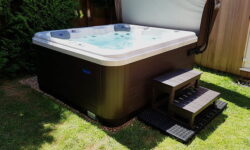You’re considering a hot tub, aren’t you? It’s not just about relaxation and bubbles. You’ve got to understand the electrical requirements.
A typical hot tub uses around 40 to 50 amps. The exact number of amps a hot tub uses can vary depending on the size of the hot tub, the number of jets, and its heating requirements. Hot tubs that are smaller or have fewer jets may use less power, while larger hot tubs with more jets may use more.
Wiring may get complicated, so it’s smart to hire a pro. Let’s dive into the nitty-gritty of how many amps a hot tub uses, and get you soaking safely in no time.
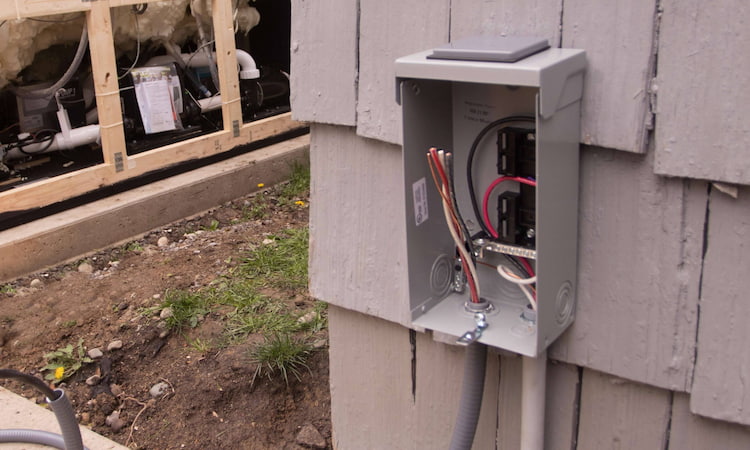
Quick Navigation
- Understanding Hot Tub Breaker and Electrical Panel
- The Essentials of Wiring for Hot Tub Installation
- Examining the Circuit Requirements of a Hot Tub
- The Process of Burying Wires for Hot Tub Installation
- The Significance of Hiring Professionals for Hot Tub Installation
- Frequently Asked Questions
- Conclusion
Understanding Hot Tub Breaker and Electrical Panel
To kick off this section, you’ve got to comprehend how a hot tub breaker and electrical panel work together to safely power your spa. You’ll need a robust 50 to 60-amp breaker. This breaker interacts with your electrical panel to provide power to your hot tub. But it’s not just about power, it’s about safety too.
That’s where the ground-fault circuit interrupter (GFCI) comes into play. You see, the National Electrical Code (NEC) mandates the use of GFCIs where electrical circuits might come into contact with water. Your hot tub is a prime example of this.
You’ll also need a spa panel or hot tub electrical panel. This is installed between your main breaker panel and your hot tub. It’s not just a bridge for power, it’s a safety measure.
And talking about safety, don’t forget that the spa panel should be located at least five feet away from your hot tub. This is not only a safety protocol but also a requirement by most building codes.
The Essentials of Wiring for Hot Tub Installation
You’re moving on to the critical step of wiring for your hot tub installation, and it’s essential you have the right tools and knowledge. It’s not just a matter of connecting wires, proper hot tub wiring is a complex process that requires precision and electrical expertise.
To help you visualize, here are some of the key components you’ll need:
- Electrical pliers
- Tape measure
- Wire stripper
- Conduit and electrical tape
First, ensure the power is turned off at the main breaker box. Then, mount the spa panel, which should ideally be at least five feet away from the hot tub.
Next, dig a conduit trench according to local building code regulations. Remember, the wire shouldn’t run directly under the hot tub for safety reasons.
The hot tub requires its own dedicated circuit to prevent overloading. Again, most hot tubs need a 220 to 240-V, 50 to 60-amp breaker. A ground-fault circuit interrupter (GFCI) should also be installed to protect against electrical shock.
Examining the Circuit Requirements of a Hot Tub
Before you dive into the specifics of hot tub circuit requirements, it’s important to remember two things: every hot tub needs its own dedicated circuit, and this circuit shouldn’t be used for any other devices. This dedicated circuit prevents overloading and ensures safety.

Now, most hot tubs require a 220 to 240-V, 50 to 60-amp breaker. That’s a significant power demand, so having the right setup to accommodate it is crucial. Your breaker should ideally be a ground-fault circuit interrupter (GFCI), which is a requirement by the National Electrical Code (NEC). GFCIs are installed where electrical circuits may potentially come in contact with water, providing an added layer of safety.
That’s not all. The wiring setup for the hot tub also needs careful attention. You’ll need to install a spa panel, also known as a hot tub electrical panel, between the breaker panel and the hot tub. This panel provides the necessary power while ensuring safety.
Also, be sure to follow local building codes when digging a conduit trench for the wires.
Don’t take any shortcuts with these requirements. They’re vital to your safety and the smooth operation of your hot tub.
The Process of Burying Wires for Hot Tub Installation
After choosing the right breaker and setting up your circuit, it’s time to focus on burying the wires for your hot tub, a task that requires careful planning and adherence to safety standards.
In most cases, you’ll need to dig a trench that is around 18 inches deep to bury the wires, although local codes may require a different depth. Be sure to check with your local building department to confirm the requirements in your area.
Here are a few key steps to keep in mind:
- Double-check your digging location for any underground utilities. You don’t want to accidentally hit a gas line or other utility.
- Use PVC conduit to protect the wires. This provides an added layer of protection and makes future wire changes or upgrades easier.
- Once your trench is dug and your conduit is laid, you can pull your wires through. Remember to always leave extra wire at both ends for connections.
- Finally, backfill your trench, taking care not to damage the conduit or wires.
The Significance of Hiring Professionals for Hot Tub Installation
Often, you’ll find it’s safer and more reliable to hire professionals for your hot tub installation. They’ve got the experience and expert knowledge to navigate the technical aspects of the task. From selecting the right breaker to understanding the National Electrical Code (NEC) requirements, they’re well-versed in every detail.
Professional installers know that a ground-fault circuit interrupter (GFCI) is a must, as it safeguards against electrical circuits coming into contact with water. They’re also aware that a special spa panel should be installed between the breaker panel and the hot tub.
When it comes to wiring, again, professionals excel. They’ve got the right tools and know the right procedures. They understand the importance of turning off the power at the main breaker box and locating the spa panel at least five feet away from the hot tub.
Most importantly, they know that a hot tub must have its own circuit to prevent overloading and ensure safety. A professional will install a GFCI and ensure the circuit isn’t used for any other devices. They’ll also know how deep to bury the wires, ensuring adherence to local bylaws.
Trusting professionals gives you peace of mind that your hot tub installation is safe and reliable.
Frequently Asked Questions
For hot tub installation, you’ll need electrical pliers, tape measure, wire stripper, electrical tape, and conduit. It’s crucial to turn off the power at the main breaker box before mounting the spa panel.
No, you can’t share a hot tub’s circuit with other devices. It requires a dedicated 220 to 240-V, 50 to 60-amp breaker. This prevents overloading and ensures safety by meeting National Electrical Code requirements.
You should have your hot tub’s electrical panel inspected annually by a professional. Regular checks ensure it’s functioning safely and efficiently. Neglected panels can develop issues, risking your hot tub’s performance and safety.
Yes, for your hot tub, you’ll need a special type of GFCI known as a spa panel or spa disconnect. It’s designed specifically for hot tubs, ensuring safety by preventing electrical shocks around water.
If you don’t bury hot tub wires at the correct depth, you’re risking physical injury from accidental contact or tripping. It also exposes the wires to weather damage, which could lead to electrical faults or fires.
Conclusion
In conclusion, understanding the electrical requirements of your hot tub is crucial for safety and efficient use. Remember, a typical hot tub needs a dedicated 50 to 60-amp breaker, and correct installation is paramount.
Always adhere to the NEC’s regulations, including installing a GFCI. Burying wires properly is also crucial. Lastly, don’t hesitate to hire a professional for the job. Their expertise ensures all aspects of the installation comply with local bylaws, giving you peace of mind.


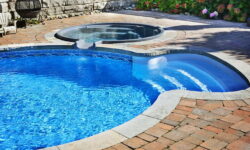
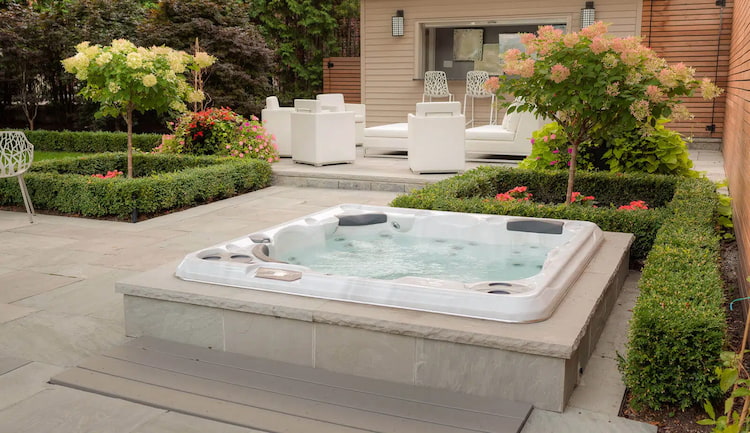
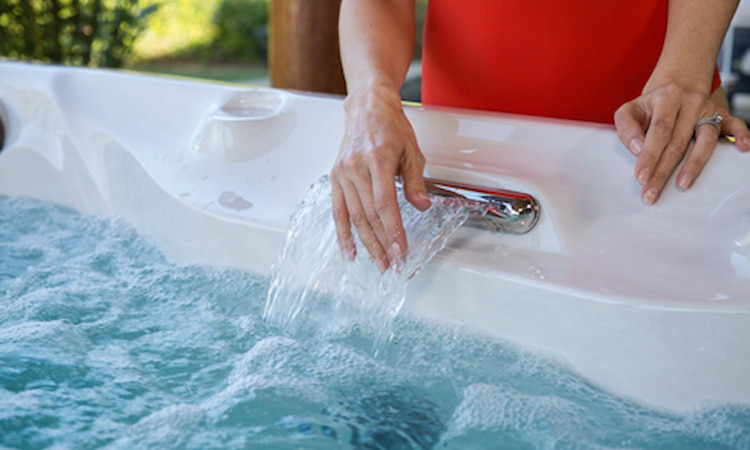
![Can You Put a Hot Tub on Pavers? [Pros & Cons] can you put your hot tub on pavers](https://hottubtales.com/wp-content/uploads/2023/10/can-you-put-your-hot-tub-on-pavers-250x150.jpg)
